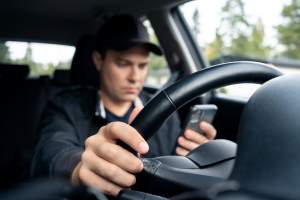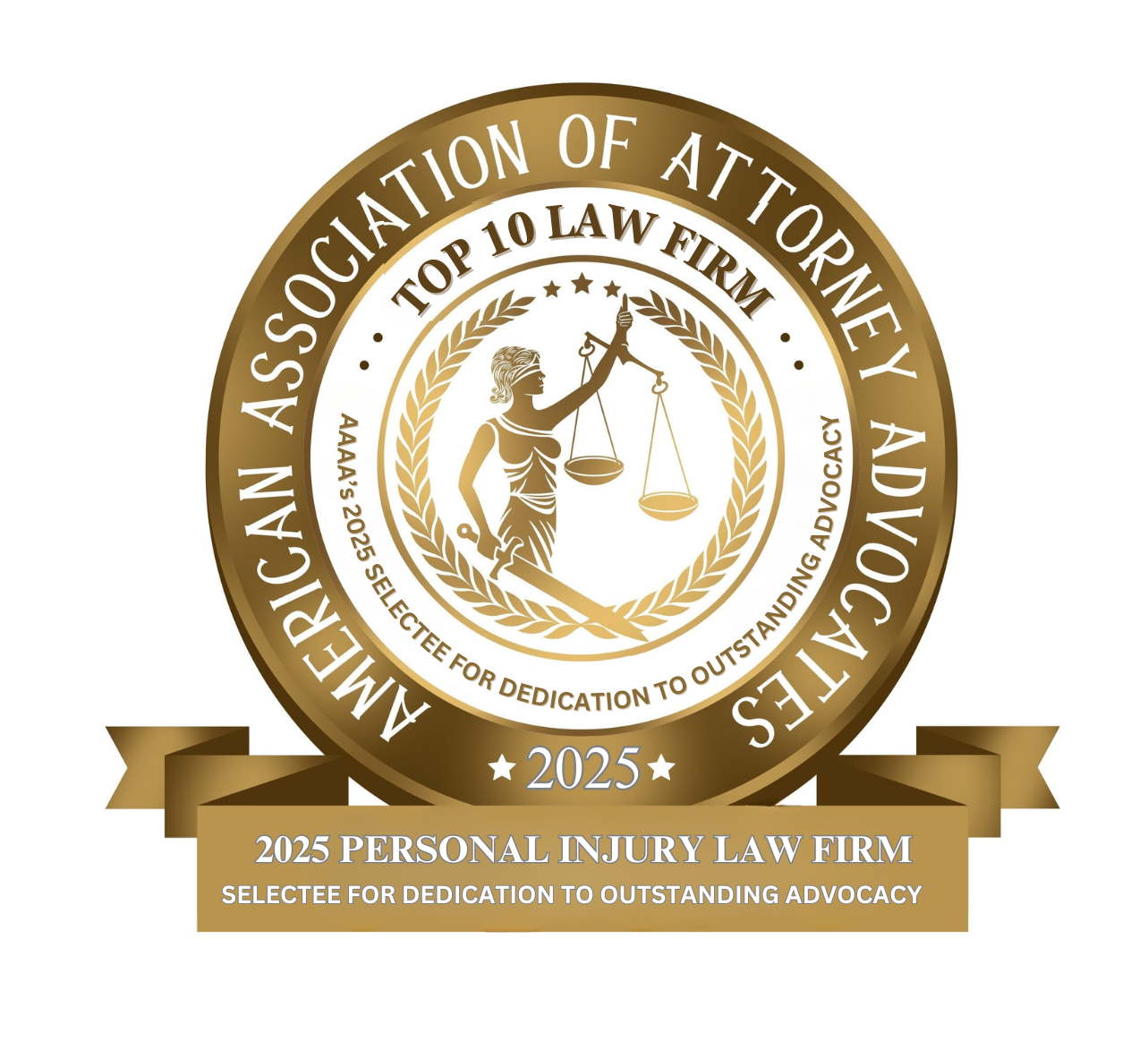- Free Consultation: (630) 527-4177 Tap Here to Call Us
Why Using Social Media While Driving Causes Serious Crashes

Smartphones and social media keep us connected, but that connection comes at a deadly cost when people use their phones behind the wheel. What used to be a quick glance at a notification can become a life-changing car accident in a matter of seconds. In this blog, we explain how social media use while driving creates visual, manual, and cognitive distraction, and give practical steps drivers and families can take to reduce the danger. If you or a loved one has been hurt by a distracted driver, contact the top-rated injury lawyers at John J. Malm & Associates. We help people recover compensation for injuries sustained in crashes caused by negligence.
“Using social media behind the wheel turns a few seconds of distraction into consequences that last a lifetime. If someone’s choice to scroll, post, or film caused your injury, they should be held accountable, and you should get the help you need to recover.” — John J. Malm, Naperville car accident attorney
How Social Media Distracts Drivers
Using social media while driving often combines three kinds of distraction at once:
- Visual: you take your eyes off the road to read or compose a post or to scroll a feed.
- Manual: you take a hand off the wheel to tap, type, or take a photo.
- Cognitive: your attention shifts away from driving so you think about the post, the reply, or the picture you want to get just right.
These three distractions together are particularly dangerous. Studies and traffic-safety authorities compare texting and social-media activity to other high-risk behaviors; the time your eyes are off the road while interacting with a phone can equal driving a football field blind at highway speeds. The National Highway Traffic Safety Administration (NHTSA) reports thousands of deaths and hundreds of thousands of injuries involving distracted drivers each year.
The Scale of the Problem
Distracted driving isn’t a rare occurrence, it is endemic on U.S. roads.
- In 2022 and 2023, distracted driving was linked to roughly 3,000–3,300 traffic deaths per year and hundreds of thousands of injuries, representing a substantial share of the nation’s crash toll.
- The Centers for Disease Control and Prevention (CDC) says about nine people are killed every day in crashes involving a distracted driver.
- Surveys show a large fraction of drivers admit to interacting with their phones while driving; in some studies more than one-third reported checking social media or using apps behind the wheel. These self-reports understate the problem because people often minimize risky behavior when surveyed.
Put bluntly: social-media-driven distraction is a major contributor to crashes that cause catastrophic injuries and death.
Why Social Media is More Dangerous Than a Quick Call
Phone calls (especially hands-free) are often described as cognitive distractions, they take your mind off driving, but social media adds visual and manual tasks on top of that. Posting a photo, checking comments, or scrolling short videos requires drivers to look at and physically manipulate their device. This combination increases crash risk more than talking does. A number of traffic-safety studies found that the time drivers’ eyes are off the road during text or social-media tasks can be long enough to miss hazards and cause severe crashes.
Who’s Most at Risk for Distracted Driving Accidents?
- Young drivers: Teens and drivers under 25 are especially likely to use social media while driving and to underestimate the danger. Studies have shown social-media browsing while driving is particularly common in younger age groups.
- Busy professionals: People juggling work emails, social feeds, and navigation face repeated temptation to glance down at incoming notifications.
- Passengers’ phones: Drivers who are tempted to show or take a photo for passengers also create risk.
- Pedestrians and cyclists: Distracted-drivers don’t only endanger vehicle occupants, many people hit by distracted drivers are pedestrians and cyclists who have no protection. The CDC and NHTSA reports note a significant portion of victims in distracted-driving crashes are non-vehicle road users, like walkers and joggers.
Real-World Consequences
Car crashes caused by social-media use can cause catastrophic outcomes: traumatic brain injury, spinal cord injury, amputations, severe fractures, and death. Beyond the physical harm there are long-term consequences, like lost wages, lifelong care needs, emotional trauma, and medical bills that can be crippling without compensation. From a legal standpoint, drivers who used their phone to post, read, or stream while driving can often be held negligent; in many jurisdictions, including Illinois, phone use is evidence of breach of the duty to drive safely and can support claims for compensatory damages.
What the Research Shows About Crash Risk

- Analyses of crash-captured video (teen driver studies, naturalistic driving studies) show distractions are present in a large share of moderate to severe crashes. The AAA Foundation and other camera-based studies found distractions were factors in many of the crashes they analyzed.
- Controlled experiments and simulator studies show social-media browsing slows reaction times and increases lane-keeping errors. Those small performance declines translate into higher crash likelihood in the real world, especially in high-speed or congested traffic.
Practical Steps to Reduce the Risk
For drivers, families, and employers, practical changes can dramatically reduce the danger of social media behind the wheel:
- Activate “Do Not Disturb While Driving” or driving focus modes on phones before you start the engine.
- Place phones out of reach (e.g., in the glovebox or trunk) so the temptation to glance is reduced.
- Use passenger copilots: if you must send a message or post, have a passenger do it, or pull over safely.
- Turn off non-essential notifications permanently or during typical driving hours.
- For parents: set a household rule that social media is off-limits while driving, model the behavior, and use parental-control driving features.
- Employers: create policies discouraging employees from using phones while driving on company time and provide training on safe driving.
All these measures make a real difference. The technology exists to reduce distraction, what’s needed is consistent use.
What To Do After a Car Accident Caused By Someone Using Social Media
If you’re injured by a distracted driver:
- Call 911 and get medical care right away. Injuries can be delayed or masked by adrenaline.
- Report to police and get the responding officer’s name and report number. If the other driver was using a phone when the crash happened, tell the officer. (Photographs of the scene, witness statements, and any video evidence are critical.)
- Preserve evidence: take photos of the scene, your injuries, and damage; keep all medical records and invoices.
- Do not sign insurance forms or give recorded statements to adjusters before speaking with an attorney.
- Contact an experienced Illinois car accident attorney who handles distracted-driving cases. We can help investigate phone records, subpoena social-media evidence, and build a case for compensation.
Frequently Asked Questions about Using Social Media When Driving
Q: Is hands-free phone use safe?
A: Hands-free reduces manual distraction but not cognitive distraction. You are still less attentive to the driving task; hands-free calls can still increase crash risk compared with not using a phone at all.
Q: Can social-media posts or photos from the crash be used as evidence?
A: Yes. Social-media posts, timestamps, and phone metadata can be powerful evidence of the driver’s activity before and during a crash. An attorney can help preserve and subpoena that evidence.
Q: What if the other driver says they were “just checking” a notification?
A: Even a momentary glance can be negligent if it leads to a crash. Proving fault usually requires evidence (witnesses, video, phone records). We can help collect it.
Q: Will my insurance company cover my injuries?
A: It depends on your and the other driver’s policies. Many injured people work with attorneys to make sure they are treated fairly by insurers and to seek compensation beyond what insurance offers.
Q: How soon should I contact a lawyer?
A: Sooner is better. Evidence (phone records, witness memories, and scene photos) can degrade quickly. If you’re injured, call an attorney early to protect your rights and preserve key evidence.
Contact the 5-Star Rated Illinois Car Accident Attorneys at John J. Malm & Associates
Distracted driving caused by social media is not an accident in the sense of being unforeseeable, it’s a predictable result of choosing to use a device instead of keeping attention on the road. Because the risks are well-known and the harm is often severe, courts and juries take distracted-driving cases seriously. If you or someone you love was injured by a driver using social media, you deserve a thorough investigation, strong advocacy, and fair compensation for medical bills, lost wages, pain and suffering, and future care.
If you’ve been hurt in a crash caused by a distracted or social-media-using driver, contact John J. Malm & Associates today. We will gather evidence (including phone and social-media records), work with medical experts, and fight to hold negligent drivers and insurers accountable so you can focus on healing and rebuilding your life. Don’t wait, reach out now for a free consultation and let us put our experience to work for you.















